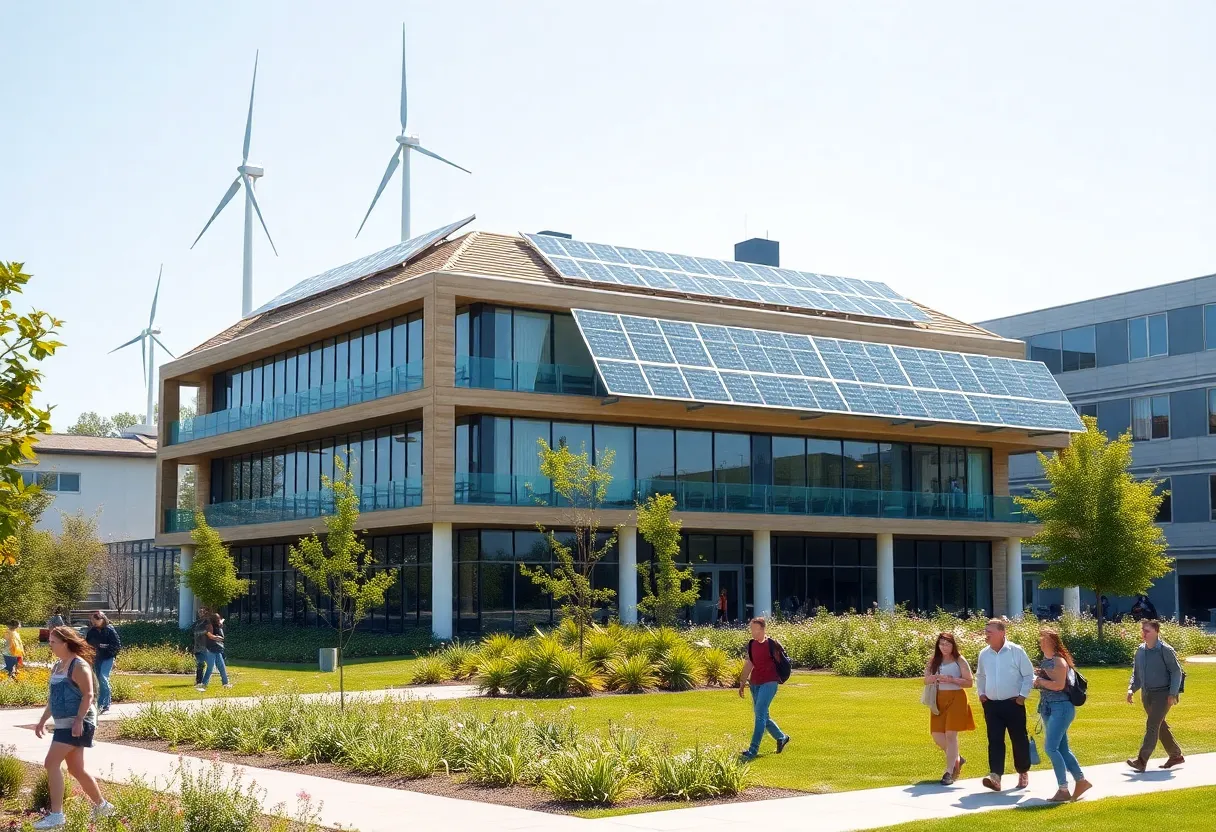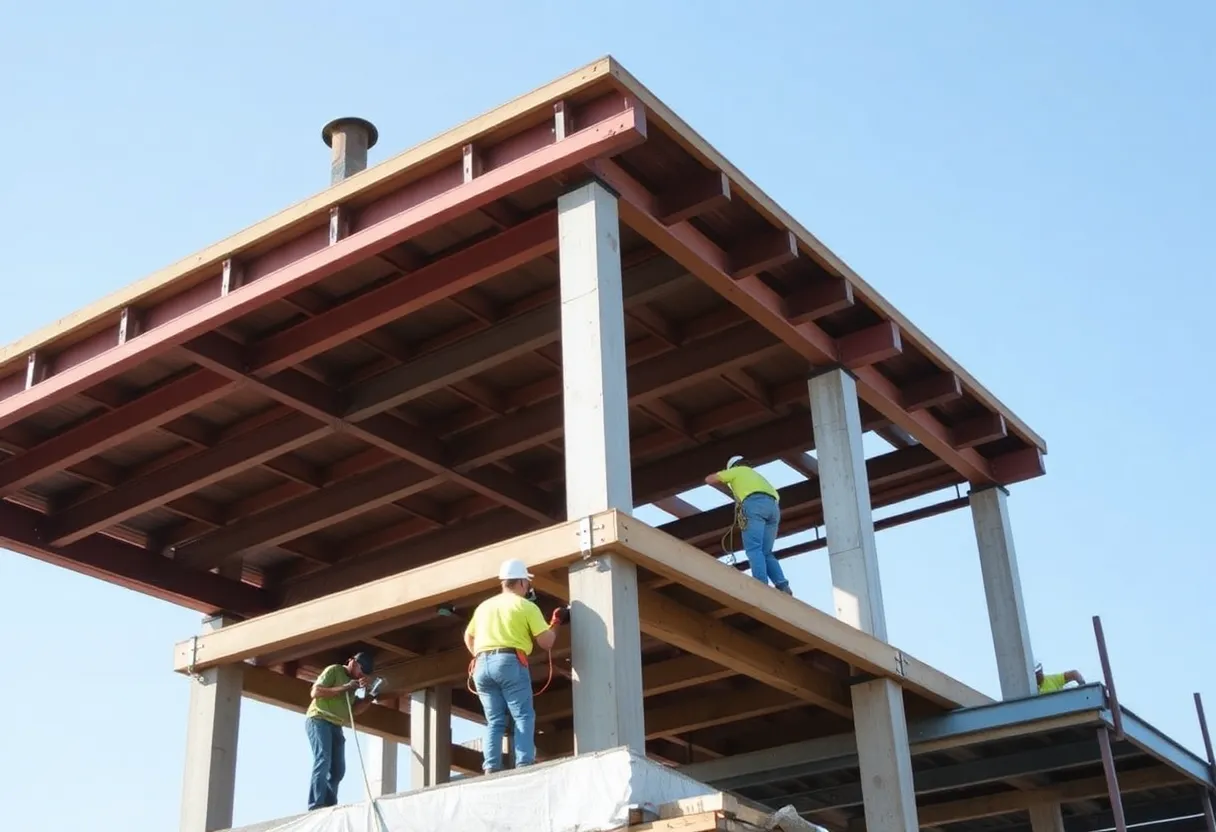News Summary
The University of Houston has received a Merit in Sustainability for its RAD structure, showcasing innovation in renewable design and energy independence. The project reflects advancements in construction practices that prioritize eco-friendly materials and technologies, marking a significant step towards sustainable development in educational institutions. Construction teams celebrate their progress as they continue to develop this landmark addition to the campus, which aims to enhance research facilities while minimizing environmental impact.
Houston Recognizes University of Houston RAD Structure for Sustainability Achievement
In Houston, the University of Houston RAD structure has been awarded a Merit in Sustainability for its innovative approach to renewable designs. This recognition highlights the project’s role in advancing energy independence on campus, with construction teams marking significant progress as announced on October 15, 2025.
The Merit in Sustainability award underscores the RAD structure’s commitment to environmental innovation, featuring designs that integrate solar panels, wind energy systems, and efficient water recycling mechanisms. These elements not only reduce the campus’s reliance on traditional energy sources but also serve as a model for future sustainable developments in the region. Construction crews have reported steady advancements, including the completion of key structural phases, which were celebrated recently as part of the project’s ongoing timeline.
Details of the project reveal that the RAD structure is a new campus addition aimed at enhancing educational and research facilities while prioritizing eco-friendly practices. The design incorporates materials that minimize carbon footprints, such as recycled steel and energy-efficient insulation, contributing to lower operational costs and reduced environmental impact. This achievement comes at a time when sustainability in construction is gaining momentum, with similar initiatives appearing across various sectors.
Background on the University of Houston’s RAD structure includes its development as part of a broader effort to modernize campus infrastructure. Initiated several years ago, the project focuses on creating spaces that support research in renewable energy technologies. By promoting energy independence, the structure helps the university achieve its goals of reducing emissions and fostering a greener environment. The announcement on October 15, 2025, marks a pivotal moment, drawing attention to how educational institutions can lead in sustainable building practices.
Further, the project’s success is attributed to collaborative efforts among architects, engineers, and construction teams who ensured that the designs met rigorous sustainability standards. This includes adherence to certifications that emphasize energy efficiency and waste reduction. The celebration of progress not only boosts morale among the teams involved but also signals the potential for similar projects to inspire community-wide changes in Houston’s construction landscape.
The University of Houston RAD structure stands out for its practical applications, such as integrating smart systems that optimize energy use based on real-time data. These features demonstrate how advanced technology can be woven into everyday campus operations, providing a blueprint for other institutions. As construction continues, the project is expected to serve as a case study for balancing innovation with environmental responsibility.
In the context of recent construction trends, this award aligns with a growing emphasis on green building practices nationwide. While the RAD structure is specific to Houston, it reflects broader efforts in the industry to adopt renewable designs. The progress celebrated by the teams highlights the challenges and rewards of implementing such initiatives, from initial planning to final execution.
Overall, the recognition of the RAD structure emphasizes the importance of sustainability in modern construction. By prioritizing energy independence, the University of Houston sets a precedent for how educational facilities can contribute to environmental goals. This development not only enhances the campus but also encourages wider adoption of similar strategies in the community.
The project’s timeline has been efficient, with key milestones met ahead of schedule, allowing for the early celebration of achievements. This efficiency is due to careful planning and the use of cutting-edge techniques that streamline the building process while maintaining high standards of quality and sustainability.
As the RAD structure nears completion, it is poised to become a landmark for sustainable architecture in Houston. The ongoing progress reported by construction teams indicates that the project is on track to deliver its full benefits, fostering a more sustainable future for the university and beyond.
In summary, the Merit in Sustainability award for the University of Houston RAD structure highlights its pioneering renewable designs and promotion of energy independence. Announced on October 15, 2025, this recognition celebrates the construction teams’ progress and sets a standard for future projects.
FAQ Section
Frequently Asked Questions
- What is the University of Houston RAD structure?
The University of Houston RAD structure is a campus addition that promotes energy independence through pioneering renewable designs. - Why did the University of Houston RAD structure win the Merit in Sustainability?
The University of Houston RAD structure wins Merit in Sustainability for pioneering renewable designs that promote energy independence. - When was the award for the University of Houston RAD structure announced?
The award for the University of Houston RAD structure was announced on 10/15/2025. - What does the University of Houston RAD structure do?
The University of Houston RAD structure promotes energy independence as part of its campus addition. - How are construction teams involved with the University of Houston RAD structure?
Construction teams celebrate today’s progress on the University of Houston RAD structure.
Key Features Chart
| Feature | Description |
|---|---|
| Renewable Designs | Pioneering designs that integrate solar panels and wind energy systems for sustainable energy use. |
| Energy Independence | Promotes campus energy independence by reducing reliance on traditional sources through efficient mechanisms. |
| Sustainability Award | Wins Merit in Sustainability, announced on 10/15/2025, for innovative environmental practices. |
| Construction Progress | Construction teams celebrate today’s progress, marking significant advancements in the project. |
| Campus Addition | Enhances University of Houston facilities with eco-friendly materials and technologies. |
Deeper Dive: News & Info About This Topic
Construction FL Resources
Zuri Gardens breaks ground on 3D-printed homes in Houston
Lightning Strike Disrupts Operations at Richmond Landfill Scale House
Author: Construction FL News
The FLORIDA STAFF WRITER represents the experienced team at constructionflnews.com, your go-to source for actionable local news and information in Florida and beyond. Specializing in "news you can use," we cover essential topics like product reviews for personal and business needs, local business directories, politics, real estate trends, neighborhood insights, and state news affecting the area—with deep expertise drawn from years of dedicated reporting and strong community input, including local press releases and business updates. We deliver top reporting on high-value events such as the Florida Build Expo, major infrastructure projects, and advancements in construction technology showcases. Our coverage extends to key organizations like the Associated Builders and Contractors of Florida and the Florida Home Builders Association, plus leading businesses in construction and legal services that power the local economy such as CMiC Global and Shutts & Bowen LLP. As part of the broader network, including constructioncanews.com, constructionnynews.com, and constructiontxnews.com, we provide comprehensive, credible insights into the dynamic construction landscape across multiple states.





